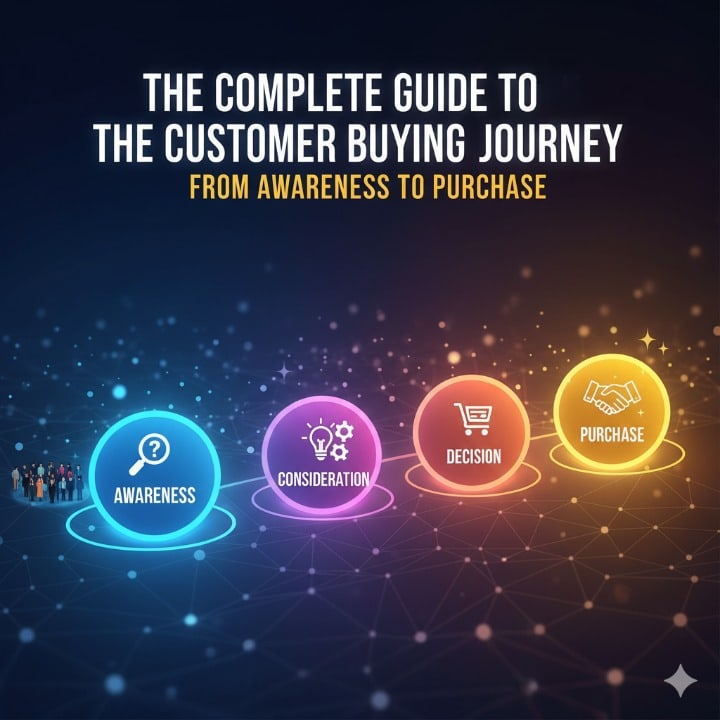The Complete Guide to the Customer Buying Journey: From Awareness to Purchase
A Step-by-Step Breakdown of How Customers Move from Realizing a Need to Becoming Loyal Advocates
Every purchase a customer makes is rarely a random act. Behind every buying decision lies a process — a series of steps that take a person from simply realizing they have a need, to finally making a purchase. This process is known as the customer buying journey.
Understanding this journey is essential for businesses and marketers because it helps them connect with potential buyers at the right time, with the right message. In this guide, we’ll break down the buying journey into clear stages and explain how customers move from awareness to purchase.
What Is the Customer Buying Journey?
The customer buying journey is the process customers go through before making a purchase decision. It highlights how people become aware of a problem, consider possible solutions, evaluate options, and ultimately make a buying decision.
Traditionally, the journey is divided into five key stages:
Awareness
Consideration
Decision
Purchase
Post-Purchase (Loyalty & Advocacy)
The 5 Stages of the Customer Buying Journey
Stage 1: Awareness
What happens here?
Customers first realize they have a problem, need, or desire. They may not know the solution yet.Example: Someone feels their laptop is slowing down but doesn’t know why.
How businesses should respond:
Create educational content (blogs, videos, social media posts)
Use SEO and ads to show up when people search for related problems
Focus on informing rather than selling
Stage 2: Consideration
What happens here?
Customers now understand their problem and actively start exploring solutions.Example: The laptop user discovers that upgrading the RAM or purchasing a new laptop can resolve the issue. They begin comparing options.
How businesses should respond:
Provide detailed guides, FAQs, and comparison content
Share testimonials and case studies to build trust
Retarget potential buyers with relevant ads
Stage 3: Decision
What happens here?
Customers shortlist possible solutions and providers. They are close to making a decision but need reassurance.Example: The buyer has selected two laptop brands and is evaluating reviews, warranty, and cost.
How businesses should respond:
Offer free demos, trials, or consultations
Display clear pricing and unique selling points (USP)
Provide limited-time offers to create urgency
Stage 4: Purchase
What happens here?
The customer finally takes action — makes the payment, signs the contract, or places the order.Example: The customer chooses a laptop and makes the purchase online or in-store.
How businesses should respond:
Make the buying process seamless and user-friendly
Offer multiple payment options and secure checkout
Provide confirmation and clear onboarding steps
Stage 5: Post-Purchase (Loyalty & Advocacy)
What happens here?
The journey doesn’t end with the purchase. Customers evaluate whether they are satisfied and, if happy, may become repeat buyers and brand advocates.Example: The customer enjoys the new laptop and recommends it to friends or writes a positive review.
How businesses should respond:
Send follow-up emails and thank-you messages
Ask for reviews and feedback
Offer loyalty programs or referral bonuses
Why Understanding the Buying Journey Matters
You can deliver the right content at the right stage.
You’ll build stronger trust with potential buyers.
You can increase conversions by addressing customer needs effectively.
You’ll create long-term relationships with customers beyond the first sale.
The customer buying journey is a roadmap of how people move from identifying a need to becoming loyal customers. By understanding each stage — awareness, consideration, decision, purchase, and post-purchase — businesses can customize their marketing plans, enhance client satisfaction, and eventually increase sales.
When you align your marketing and communication with this journey, you don’t just sell products or services — you guide your customers towards making informed decisions and building long-lasting trust.


